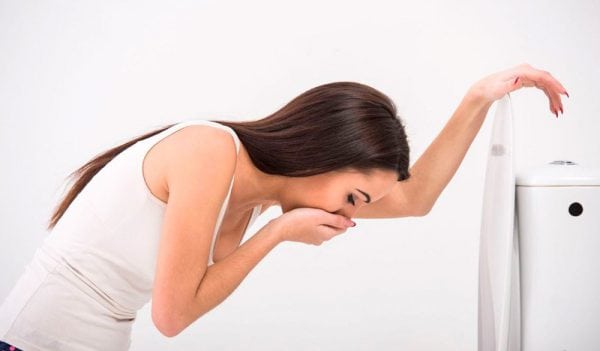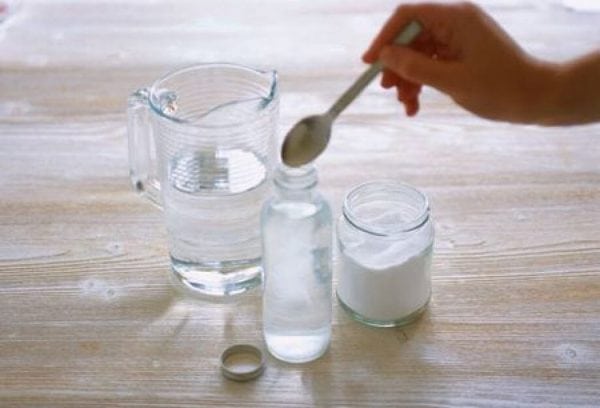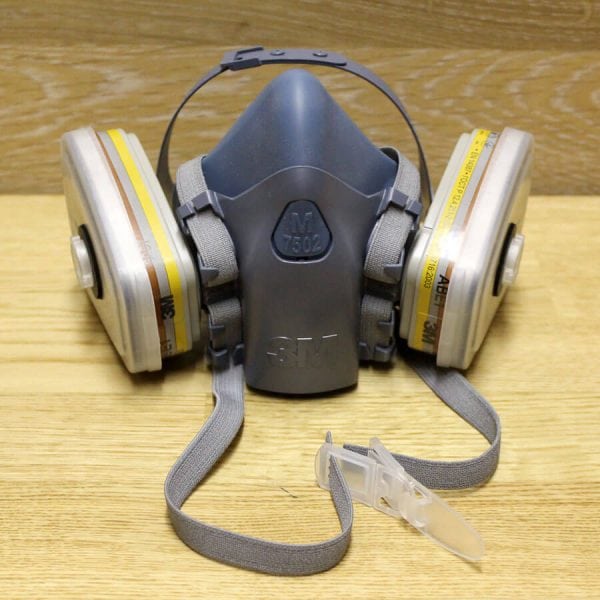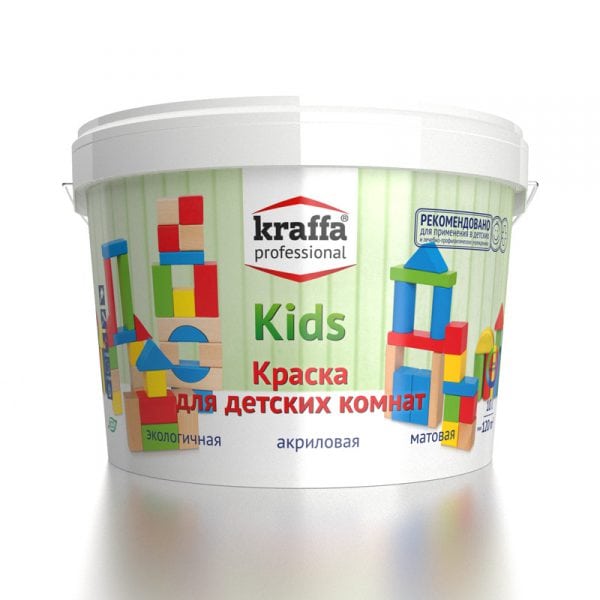When carrying out paint work in an apartment or a house, people sometimes forget about safety measures, and after some time they notice discomfort in themselves. This is nothing but paint poisoning. This condition is extremely dangerous to health, so it is important to know its main symptoms and first aid measures.
- Types of intoxication
- Symptoms of Poisoning
- Special factors
- First aid and medical measures
- How to avoid intoxication
- Non-hazardous option

Types of intoxication
Two types of states are distinguished:
- Acute poisoning by paint fumes. Most often falls on the season of the start of home construction work. The main trigger is a gross violation of safety precautions.
- Chronic The insidiousness of this condition is that the symptoms manifest themselves over time. Most often observed in professional painters daily encountering fumes of paint.
Symptoms of Poisoning
Adequate measures are possible only if the main symptoms of poisoning are known. They are usually divided into two groups - primary and secondary.
The primary symptoms include:
- painful attacks of nausea, accompanied by vomiting;
- the victim often has a headache over a long period of time;
- profuse lacrimation, accompanied by redness and burning;
- dizziness, loss of consciousness;
- stomach upset;
- pallor, discoloration of the surface of the skin (especially near the mouth);
- smell of acetone emanating from the mouth;
- shallow, heavy breathing.
Secondary symptoms include:
- disorders of the respiratory system arising from a lack of oxygen (dry mouth and nose);
- pathologies in the ophthalmological line, which can cause vision loss;
- changes in the work of the cardiovascular system.
Having found the above symptoms, you should seek medical help as soon as possible and begin specialized treatment.
In chronic intoxication, complaints look like:
- constant fatigue, apathy, decreased mental activity;
- persistent dry cough;
- discomfort in the nose, eyes;
- sleep disturbance;
- nausea, decreased appetite;
- complaints of a headache in the back of the head.
These symptoms can also not be ignored by doctors.
to contents ↑Special factors
Deterioration of health observed in violation of the rules for working with paint is easily confused with such an equally common phenomenon as an allergy to the smell of paint.
If a person is not aware of the nonspecific reaction of his body to paints and varnishes, he can easily confuse the first signs of an upcoming attack with paint poisoning. Discomforts in the nose, dizziness, pain in the eyes, lacrimation, bad breath can be noted. In allergies, some time after contact with a provoking factor, specific causes of poor health begin to appear, which distinguishes it from poisoning:
- itching, peeling;
- the appearance of rashes on the skin;
- the head hurts even more intensely.
In addition, even after the termination of contact with the coloring matter in the nose, its smell is felt. If you do not pay attention to this condition for a long time, it takes on a chronic form. The consequences are extremely serious, up to disability.
The occurrence of a severe allergic reaction requires immediate medical attention and adequate treatment.
In addition to allergy sufferers, two more groups of people may suffer from poisoning with dyes:
- pregnant women;
- children.
During prenatal development, the baby breathes oxygen from the mother. The poisoned air inhaled by it through the circulatory system also enters the fetus, which increases the risk of genitourinary system defects, negatively affects the further quality of lung function. Therefore, pregnant women should refuse to participate in the repair (even the future child), so that neither the future mother nor the child will suffer from the influence of paint.
to contents ↑No less sensitive to pairs of coloring compounds and children. The symptoms of poisoning mentioned above can manifest themselves more strongly and have more serious health consequences.
First aid and medical measures
In case of poisoning with paints and varnishes, first aid should be provided as soon as possible. General procedure:
- Take victim to the street.
- Providing an alkaline drink (milk with soda or water with sugar and soda) in large quantities is the best treatment before the doctors arrive.
- If there is a loss of consciousness, the poison is laid to one side, the head should lie freely, one leg should be bent at the knee to avoid obstruction. To bring the victim into consciousness, a cotton wool moistened with ammonia is brought to the nose.
Indirect cardiac massage and other resuscitation measures with the necessary skills can be done not only by a medical professional. Treatment of poisoning is carried out in the toxicological department of the hospital.
to contents ↑How to avoid intoxication
When working with paints and varnishes, safety rules must be strictly observed, for example, use a mask. It should fit snugly and provide reliable protection for the mouth.
As soon as during the work you feel an unpleasant odor emanating from the mouth and begin to disturb the sensations in the nose, you should stop staining and leave the room.
In addition to a respirator, gloves and goggles should be used.
Furniture coloring is carried out exclusively in a carefully ventilated room, specially designed for this.
Protective measures also include choosing a safe paint. For a children's room, for example, water-based materials should be chosen. Walls and ceiling can be painted with acrylic paint. This can also be done in rooms where allergy sufferers live. In the nursery, it is allowed to use material with a photocatalytic effect - specially selected components of natural origin react with light, make air free from volatile organic substances, disinfect it, destroy bacteria, smells.
If it is planned to paint children's furniture, the recommendation to use water-based coatings or acrylic paint remains relevant.
Non-hazardous option
The market of paints and varnishes is constantly evolving. An example of a paint that does not have an active odor and is distinguished by its organic composition is powder. Such material is not dangerous even for use in a children's room.
The use of powder materials is allowed for painting furniture, walls. Unlike acrylic paint, painting using powder coatings is more economical.
The composition does not contain volatile harmful substances that can enter the human respiratory tract and lead to poisoning, which makes powder paints a universal remedy. Lack of smell reduces the time during which it is dangerous to be indoors.
Surfaces painted using powder materials, even with strong heating, do not emit compounds hazardous to humans. The quick drying of the powder materials reduces the contact time with the paint and, accordingly, reduces the risk of poisoning.
Staining should be carried out with paints that do not have an active odor (or none at all), which differ in the most natural composition. Mandatory use of protective equipment. Then poisoning can be avoided.












Do you need protective equipment even when working with powder paint?
Of course we need, because hitting a painted surface, some of the small particles of powder break up and hang in the air that you breathe. Especially if you are painting indoors.